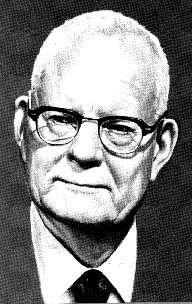BRYCE ON MANAGEMENT
– Because we are not dedicated “for the good of the order.”
Click for AUDIO VERSION.
To use this segment in a Radio broadcast or Podcast, send TIM a request.
 Shortly after I wrote a recent article regarding the problems my home owners association was experiencing, I received several notes regarding the problems in other nonprofit groups in my area. This includes fraternal, political, religious, club sports and other home owner groups. I know many of them as I have actively participated in them over the years, but today they all seem to be struggling to keep their heads above water. It appears most, if not all, are in a self-destruct mode, which caused me to wonder why.
Shortly after I wrote a recent article regarding the problems my home owners association was experiencing, I received several notes regarding the problems in other nonprofit groups in my area. This includes fraternal, political, religious, club sports and other home owner groups. I know many of them as I have actively participated in them over the years, but today they all seem to be struggling to keep their heads above water. It appears most, if not all, are in a self-destruct mode, which caused me to wonder why.
Let’s put our cards on the table; the biggest problem with most nonprofits is they are run by nice people, who mean well, but haven’t a clue as to what they are doing. Many of these offices come with a fancy title, but offer little in terms of insight for performing the work. Very few provide training in how to run a nonprofit effectively. There are some state courses describing pertinent rules and regulations to be observed, but none to my knowledge in terms of how to actually lead and manage. Consequently, nonprofits flounder due to ineffective leadership, causing meetings to become chaotic, financial reports to be prepared with errors, and the attitude of the general membership suffers, causing a decline, all because it is well known management is incompetent. Even worse, stories of embezzlement and gross negligence have become common.
People who serve on the Board of Directors for nonprofits should only do so “for the good of the order,” meaning it has more to do with the overall group and less about the individual. In the early days of our country, the Congress consisted of representatives from farms and other businesses who took turns serving, and at the end of their term, were anxious to return home and tend to their farm or business. There was no thought of lifetime service as there is today. They came, they performed the nation’s business “for the good of the order,” and returned home. This simply is not so anymore.
Today we have people who serve only to fuel their ego or career. There are those who take on a position to give themselves visibility to promote their products and/or services. Of course, the membership has no interest in this, yet the individual persists in his/her agenda. Then there are others who look to add a feather in their cap which will look good on a resume. In Freemasonry, we call this “chasing aprons,” meaning they are actively pursuing fancy Masonic aprons and titles. Most of these people never accomplished much in life and thrive on the adulation associated with such recognition. I have always been of the opinion that such people should be given their apron, then get them out of the way so they do not impede progress.
Such conduct results in what today is called an “Ineptocracy,” an incompetent ruling government where the least capable are elected to positions of authority. Quite often, this is done not because the person has exhibited any special talent, but rather there is nobody willing to serve or, perhaps worse, “it’s his/her turn” to preside. Not surprising, people quite often rise above their level of competency (aka, “The Peter Principle”). This does a disservice to both the organization and the person as well. When a person has risen above their level of competency, it will become obvious to others and will likely affect morale.
Working “for the good of the order,” means you believe in the virtues of the group, that it serves a useful purpose, and that you possess something to help the group, be it a specific talent or you are willing to work in any capacity. This is an important point. If you are unwilling to get your hands dirty, you should not be serving on a Board of Directors. It is like the old saying, “talk is cheap.” The effort of ALL members of the board are required in order to be successful. It is one thing to offer advice, quite another to see it through to completion.
There is one other cause for failure, that people believe management is not “cool.” Translation: a person lacks the discipline, organization, and structure to effectively lead people and hold them accountable. This normally results in either one person doing all the work so others are not burdened, but more likely, everything falls through the cracks and chaos ensues.
Whoever leads a nonprofit, must set the proper tone from the beginning, including the “5-W’s and H,” meaning “Who” is assigned to “What” work, “When” and “Where” it must be performed and “Why.” As to “How,” there may be standard protocols, tools and techniques to be followed, but it may be time to upgrade them. This should be followed by a prioritized list of objectives for the nonprofit to pursue in the operating year.
This brings up an important point, I am a strong proponent of “Managing from the Bottom-Up,” meaning assign responsibility, train accordingly, and get out of their way. Unless there are specific time constraints requiring urgency, it is not necessary to micromanage everything. Most nonprofits are volunteer organizations, and as such, people typically want to go about their jobs without Attila the Hun breathing down their necks.
“Managing from the bottom-up” also includes the formation and empowerment of committees to perform specific functions, such as reviewing finances, planning social affairs, membership and programming, property maintenance, or special projects. By building legitimate committees, you are cultivating people to succeed to the Board over time. This is why they must be allowed to speak and think for themselves.
As I have said repetitively over the years, running a nonprofit organization doesn’t require rocket science. Actually, in most cases, it is quite simple. You need simple and responsible management; someone who knows the governing docs, Robert’s Rules of Order, and knows how to write an agenda and use a gavel. It is not necessary for the leader to have all the answers, but how to formulate the answers with the rest of the board.
One last responsibility the leader must master is to “do yourself out of a job.” Your tenure is typically brief, such as a year or two. Before you leave though, it is essential you have taught the Board to carry on without you. This is actually an on-going process beginning on the first day of your tenure. Take plenty of notes, perhaps a log of your activities, but also create or update checklists, job descriptions, governing docs (e.g., bylaws), and technical “how to” procedures.
The chaos within nonprofit groups these days has gotten worse because the leaders have either forgotten the basics of management or were never trained to begin with, or maybe worse, they’re in it for the wrong reasons, such as accolades. It is like they have come down with a bad case of “The Stupids.” All of this is so unnecessary. We must always remember, we are there to serve for “the good of the order,” and no other reason.
Maybe I should give a class “for the good of the order.” Let me know if you are interested.
Keep the Faith!
P.S. – Don’t forget my new book, “Tim’s Senior Moments” now available in Printed and eBook form.
Note: All trademarks both marked and unmarked belong to their respective companies.
 Tim Bryce is a writer and the Managing Director of M&JB Investment Company (M&JB) of Palm Harbor, Florida and has over 40 years of experience in the management consulting field. He can be reached at timb1557@gmail.com
Tim Bryce is a writer and the Managing Director of M&JB Investment Company (M&JB) of Palm Harbor, Florida and has over 40 years of experience in the management consulting field. He can be reached at timb1557@gmail.com
For Tim’s columns, see: timbryce.com
Copyright © 2019 by Tim Bryce. All rights reserved.
Listen to Tim on WZIG-FM (104.1) in Palm Harbor,FL; Or tune-in to Tim’s channel on YouTube. Click for TIM’S LIBRARY OF AUDIO CLIPS.
 Some Freemasons question why I post management topics in this forum. They find it difficult to understand what can be achieved by writing on such topics. I do so because I believe there are a lot of Freemasons who can learn from the world of management. To illustrate, consider the works of
Some Freemasons question why I post management topics in this forum. They find it difficult to understand what can be achieved by writing on such topics. I do so because I believe there are a lot of Freemasons who can learn from the world of management. To illustrate, consider the works of  Americans tend to be more reactive as opposed to proactive in their approach to life. I suspect the reason can be traced back to our Anglo heritage which historically has been hesitant to take decisive action. Consider how slow the British were to suppress the uprisings of its colonies, usually making the wrong decisions in the end. Our history is littered with instances affirming our reactive behavior; e.g., Pearl Harbor, the Battle of the Bulge, the Stock Market crash of 1929, 9/11, Hurricane Katrina, and the Crash of 2008. These disasters could have been avoided if we had heeded warnings and planned accordingly. For example, the destruction of Katrina could have been averted had local politicians heeded the advice of the Corps of Engineers. Pearl Harbor could have been avoided if the military had listened to General Billy Mitchell a whopping 17 years earlier.
Americans tend to be more reactive as opposed to proactive in their approach to life. I suspect the reason can be traced back to our Anglo heritage which historically has been hesitant to take decisive action. Consider how slow the British were to suppress the uprisings of its colonies, usually making the wrong decisions in the end. Our history is littered with instances affirming our reactive behavior; e.g., Pearl Harbor, the Battle of the Bulge, the Stock Market crash of 1929, 9/11, Hurricane Katrina, and the Crash of 2008. These disasters could have been avoided if we had heeded warnings and planned accordingly. For example, the destruction of Katrina could have been averted had local politicians heeded the advice of the Corps of Engineers. Pearl Harbor could have been avoided if the military had listened to General Billy Mitchell a whopping 17 years earlier. One of the reasons AMC’s
One of the reasons AMC’s